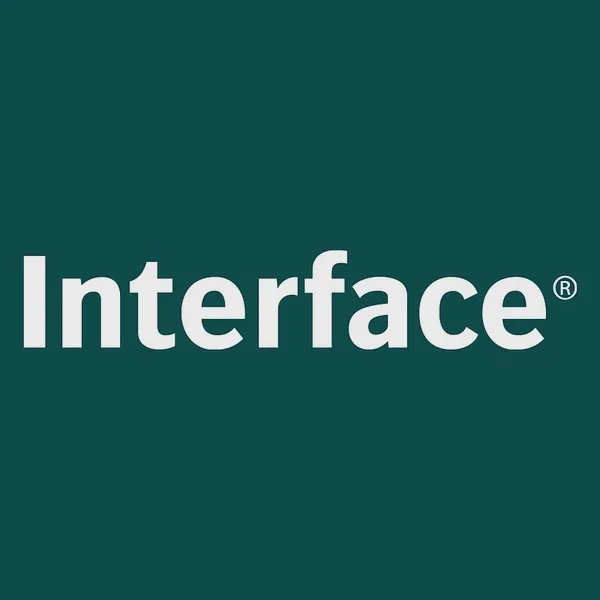Interface, Inc. EPDs: Coverage, Gaps, Competitors
Interface is a global flooring brand spanning carpet tile, luxury vinyl tile, and rubber. Specifiers regularly ask one thing first: do you have EPDs for the exact construction I’m putting into the spec. Here’s a fast read on their portfolio and how well it’s covered, plus where missing declarations could quietly cost a project win.


Company snapshot
Interface is best known for modular carpet tile, with sizable positions in luxury vinyl tile and rubber through the nora brand. This is not a single‑product specialist. They play across three core flooring categories used in offices, healthcare, education, and public spaces.
What they sell, at a glance
- Carpet tile in dozens of backings and yarn weights, with design families refreshed frequently.
- LVT in multiple thicknesses and acoustic variants aimed at commercial traffic.
- Rubber sheet and tile via nora for healthcare, labs, transit and education.
Across these lines, total SKUs sit in the hundreds, while active colorways per family typically run in the dozens. That breadth is why spec teams ask for precise EPD matches.
EPD coverage status in 2025
Carpet tile coverage is strong. Expect product‑specific Type III EPDs that map to major backings such as CQuest Bio, CQuest GB, and ReadyBac, plus region‑specific constructions. Many of these are current and align to recognized program operators.
LVT coverage is meaningful. Recent declarations exist for commercial‑grade constructions, including acoustic builds that stay current well into the later 2020s. Rubber coverage via nora is present, particularly in Europe, where program operators frequently publish EPDs for sheet and tile systems.
One practical watch‑out. Interface’s portfolio refreshes often, and some special‑order visuals or niche constructions may not have a matching EPD at launch. If a style change alters yarn weight, backing, or thickness, verify whether the existing declaration still applies to that exact SKU.
Why this matters on bids
LEED v4.1 awards points when projects use products with EPDs, and it gives a higher multiplier for product‑specific Type III EPDs that are third‑party verified. Those EPDs can count as 1.5 products toward the credit threshold, which is why they punch above their weight on scorecards (USGBC, 2024) (USGBC LEED v4.1 MR EPD credit, 2024). When an EPD is missing, project teams often must apply conservative defaults, so the product gets sidelined even if performance is great.
Where gaps can sneak in
- Regional manufacturing shifts. Moving a carpet style between plants can change declared impacts and may require a new or updated EPD. Ask for plant‑specific declarations when possible.
- System installs. Adhesives, underlayments, and transition pieces are frequently sourced separately. If the spec calls the full system, a missing declaration on a component can break an otherwise clean EPD chain.
- Aging declarations. EPDs generally carry a five‑year validity window before they must be updated to newer PCRs. If a preferred style is nearing its renewal date, confirm renewal timing so it does not lapse mid‑project during submittals.
Competitors Interface sees most
- Carpet tile. Shaw Contract, Milliken, Mohawk Group, Tarkett, J+J Flooring. Most publish product‑specific Type III EPDs on core backings.
- LVT. Mannington Commercial, Shaw, Tarkett, Gerflor, HMTX brands. EPDs are common across glue‑down and click, with acoustic builds increasingly covered.
- Rubber. Roppe and Johnsonite lines from Tarkett are frequent alternates to nora in healthcare and education, and they typically maintain EPDs for key SKUs.
If you’re benchmarking your own EPD plan
Treat the PCR like the rulebook of Monopoly. Ignore it and the game falls apart. Match the PCR your spec competitors are using, then publish product‑specific Type III EPDs for the exact builds you sell most. Keep data collection painless so engineers and plant managers do not get stuck in spreadsheet purgatory. A partner who handles the heavy data wrangling and project management lets your team stay focused on operations while the paperwork moves quickly. It’s definately the simpler way to keep renewals on time and coverage complete.
Bottom line for specability
Interface’s carpet tile lineup is well covered, LVT is covered where the commercial demand is highest, and rubber shows solid availability through nora. The commercial risk lives at the edges. New visuals, plant changes, system components, and renewals are the places where an EPD can go missing. Close those gaps and you sidestep avoidable spec penalties, protecting margin without a game of price limbo.
Frequently Asked Questions
Does Interface focus on one product or span multiple flooring categories?
They span three major categories used in commercial projects: carpet tile, LVT, and rubber via nora. That breadth means spec teams need EPDs that match exact constructions.
Is Interface’s EPD coverage complete across its catalog?
Coverage for carpet tile is extensive and LVT coverage is meaningful, with rubber coverage via nora present. Gaps can appear for special-order builds, system components, or nearing-renewal declarations.
Why do product-specific Type III EPDs matter for Interface and its competitors?
LEED v4.1 counts product-specific Type III EPDs as 1.5 products toward the credit, which can materially help projects meet MR thresholds and keep products in play during submittals (USGBC, 2024).
